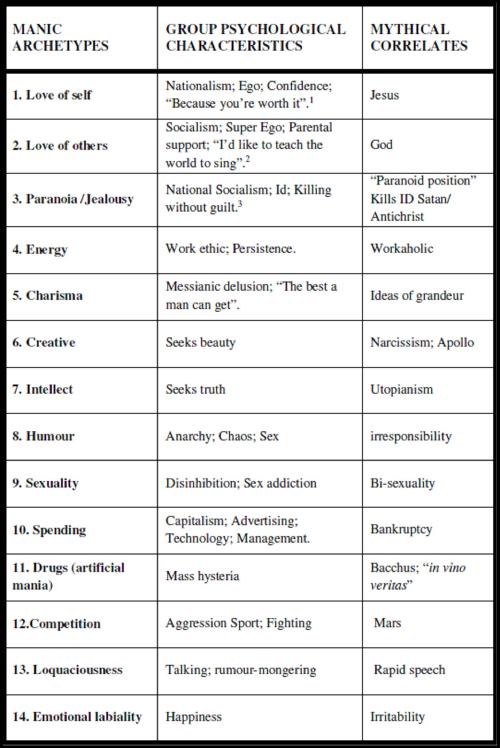
|
Choice Publishing Book Store |
|
THE MANIC LINK
~ ~ ~
Stuart W. Marshall
~ ~ ~
ISBN: 978-1-913275-77-8
Price: € 25.00 plus P&P Domestic Shipping (Irish Address)
For International Shipping (any address outside of Ireland), please use below Buy Now Button
|
|
About the Book:
‘The Manic Link’ explores the idea that Jesus was a manic depressive and that it is common for people with manic depression to hold the belief that they are Jesus, otherwise referred to as the messianic delusion. The book also explores how people with manic depression buy and sell things which relates to capitalism and advertising, how they tend to be grandiose, humorous, sometimes over sexual and believe in love. Unfortunately, people with manic depression can become paranoid and experience persecutory beliefs which can lead to them to become violent. The Manic Link concludes that the characteristics of manic depression/bipolar disorder are hardwired in religion, culture, advertising, capitalism, creativity, paranoia and chaos.
Stuart Marshall’s ‘The Manic Link’, is a strikingly original synthesis of psychology and politics. Concentrating on the manic phase of bi-polar disorder which has received much less attention than the depressive side, Marshall shows its huge potential for a kind of demonic creativity. By closely considering the manic personality - of which Napoleon and Hitler (and, in my experience, many Hollywood producers) are paradigms - he demonstrates that the demons which drive great historical actors are not confined to their psychology but permeate the world of history, religion and politics. Marshall’s new analytical approach may help us to identify manic cultures, manic ideologies and manic societies - and protect ourselves from their excesses. Accordingly, apart from its sheer intellectual interest, this book throws new light on a host of practical problems in today's world.’ Eoghan Harris (Sunday Independent)
‘The Manic Link’ by Stuart Marshall provides a unique insight into the experience of mania, the farther reaches of the human mind and the possibilities of the human condition. Few books have the courage to tackle these topics in the first place and fewer still do so with the passion, elegance and erudition of The Manic Link. This is an invaluable document, a timeless gift to students of the human mind. Professor Brendan Kelly, Professor of Psychiatry, Trinity College Dublin.
|


